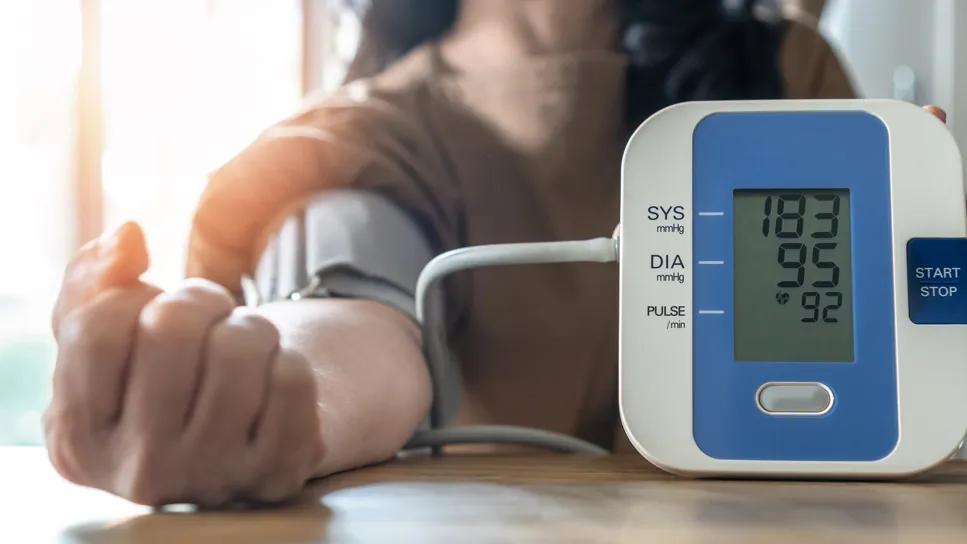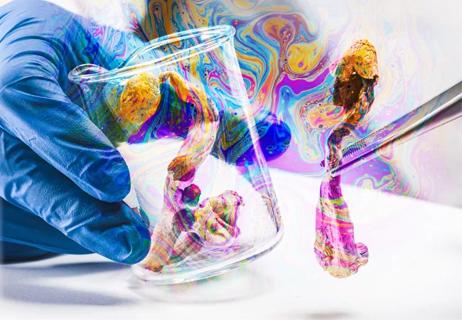Case underscores potential dangers of combining psychedelics with tranylcypromine and stimulant medications

A new case report highlights what appears to be the first documented hypertensive emergency resulting from a combination of psilocybin mushrooms, tranylcypromine and dextroamphetamine-amphetamine.
Advertisement
Cleveland Clinic is a non-profit academic medical center. Advertising on our site helps support our mission. We do not endorse non-Cleveland Clinic products or services. Policy
Published in The Journal of Psychoactive Drugs, the report urges clinicians to proactively counsel patients about the potential dangers of mixing monoamine oxidase inhibitors (MAOIs) with naturally occurring psychedelics.
The case describes a 42-year-old man with treatment-resistant major depressive disorder who developed severe hypertension and chest pain shortly after ingesting 1 gram of Psilocybe cubensis (“Golden Teacher”) mushrooms for self-medication of his depression. At the time, he was taking the MAOI tranylcypromine 20 mg twice daily and extended-release dextroamphetamine-amphetamine (a stimulant) 20 mg daily, among other medications.
Within 30 minutes of mushroom ingestion, the patient experienced chest pain radiating to the jaw, heart palpitations and a pounding headache, says lead author Brian Barnett, MD, a psychiatrist in the Center for Adult Behavioral Health at Cleveland Clinic Lutheran Hospital.
The patient’s blood pressure reached 230s/100s mm Hg, prompting an emergency medical evaluation. An electrocardiogram showed abnormalities consistent with myocardial infarction; thankfully, a subsequent cardiac catheterization revealed normal coronary arteries and ventricular function, indicating no structural cardiovascular damage. The patient's blood pressure normalized following treatment with lorazepam, nitroglycerin and aspirin, and he was discharged the next day without residual deficits.
Although psilocybin remains investigational and is not FDA-approved for any psychiatric indication, Dr. Barnett notes that patients are increasingly using psychedelic compounds to self-treat depression and other mental health conditions after learning about promising clinical trial findings. This trend, combined with renewed interest in prescribing MAOIs for treatment-resistant depression, raises new safety challenges.
Advertisement
“Our concern is that clinicians will increasingly encounter patients who are experimenting with psychedelics while on prescription medications that carry risks in combination,” he explains. “Because formal interaction studies are nearly nonexistent for psychedelics and prescription drugs, both patients and prescribers may be unaware of potential risks.”
Dr. Barnett and his coauthors propose that the hypertensive emergency in this case stemmed not from psilocybin itself but from phenylethylamine (PEA) — a trace compound with amphetamine-like activity recently identified in Psilocybe cubensis.
“PEA causes the body to release more of its adrenaline-like chemicals, which raise blood pressure,” he says. “When combined with an MAOI like tranylcypromine, which prevents its breakdown, and a stimulant such as dextroamphetamine, the full effects on blood pressure might be extreme.”
Dr. Barnett, clinical director of Cleveland Clinic’s Psychiatric Treatment-Resistance Program, emphasizes that the patient’s medication profile and timing likely drove this hypertensive emergency, since the patient had not eaten any of the tyramine-containing foods that can sometimes cause these episodes in patients taking MAOIs.
“Although dextroamphetamine-amphetamine can raise the risk for elevated blood pressure in patients taking tranylcypromine, this risk can usually be adequately managed clinically by using lower doses of both drugs," he says." In this case, adding the mushrooms, which contain a second stimulant (PEA), likely pushed the patient’s body over the edge, leading to very high blood pressure.”
Advertisement
Notably, the patient had previously taken a higher dose (3 g) of an unknown psilocybin mushroom species while prescribed the MAOI phenelzine and the tricyclic antidepressant nortriptyline without incident. The difference, Dr. Barnett suggests, probably stems from the lack of co-prescription of dextroamphetamine-amphetamine at that time. However, it might also reflect the fact that tranylcypromine carries a greater risk than phenelzine of causing high blood pressure when combined with stimulants, as well as the absence of nortriptyline, which may protect against hypertensive episodes caused by sympathomimetic compounds in patients taking MAOIs, when the patient combined psilocybin mushrooms with tranylcypromine.
While classic psychedelics such as lysergic acid diethylamide (LSD), dimethyltryptamine and synthetic (lab-made) psilocybin have demonstrated relatively stable blood pressures profiles when combined with MAOIs in historical trials, psilocybin mushrooms include more than just psilocybin. In addition to psilocybin and its metabolite psilocin, they contain multiple alkaloids, including baeocystin, norbaeocystin and PEA, whose pharmacologic properties are not well understood.
“This case highlights the unpredictability of plant- and fungus-derived substances,” Dr. Barnett adds. “Even small compositional differences can have significant physiologic effects when combined with prescription drugs. 'Natural’ does not always mean ‘safe.’”
Dr. Barnett urges psychiatrists and primary care providers to explicitly warn patients taking MAOIs — particularly tranylcypromine — about the risks of ingesting psilocybin mushrooms. He notes that co-prescribed stimulants, such as amphetamine-based medications for ADHD, may further amplify the danger.
Advertisement
He also emphasizes the importance of maintaining an open dialogue with patients about psychedelic use. “Most patients won’t volunteer that they’re using psychedelics unless clinicians ask directly and without judgment,” he notes. “Creating that space for dialogue can prevent potentially life-threatening outcomes.”
As psychedelic-assisted therapy research expands and patient interest in non-medical psychedelic use grows, psychiatrists will need updated training to manage and counsel patients appropriately, Dr. Barnett adds. He and his colleagues cite surveys showing that clinicians identify drug-interaction education as one of the most desired areas of continuing education regarding psychedelics.
“This case provides a glimpse into the evolving clinical landscape in which our patients have more access to powerful psychoactive substances than ever before,” he says. “We need to be prepared to guide them safely using harm-reduction techniques.”
Advertisement
Advertisement

The reassuring potential of psychedelics for the management of substance use and treatment-resistant mental health disorders

Music therapists provide solace, help patients meet therapeutic goals

Specialized course helps APPs navigate clinical concerns and interpersonal skills

Helping patients and providers navigate the pros and cons of common medications and nonpharmacological approaches

Program empowers Black stylists to provide emotional first aid

Palliative and Supportive Care Teams offer comprehensive care to improve the lives of patients facing cancer

Study shows a growing openness to the clinical potential of psychedelic treatments

Experts recommend task-focused strategy for monitoring treatment